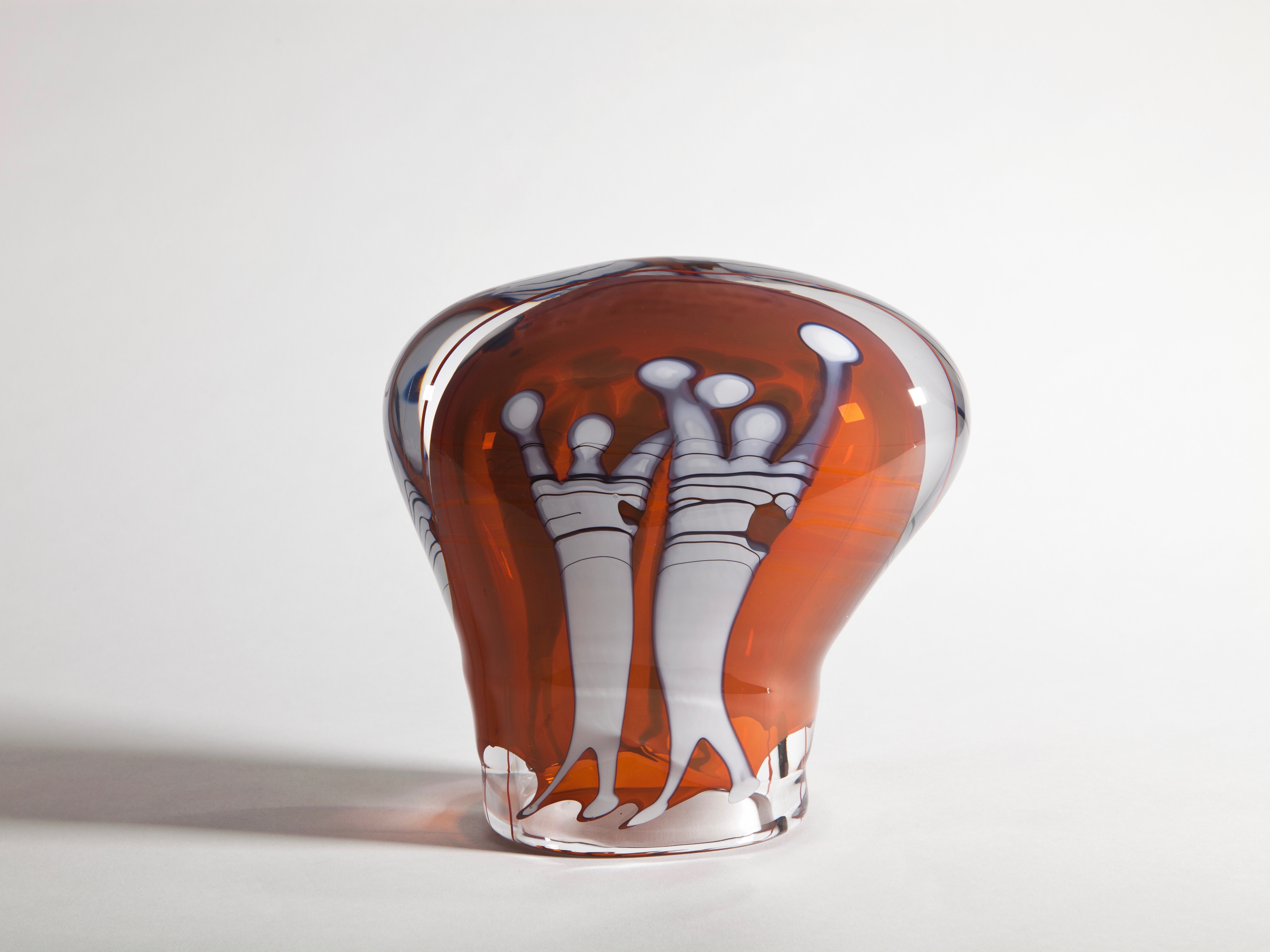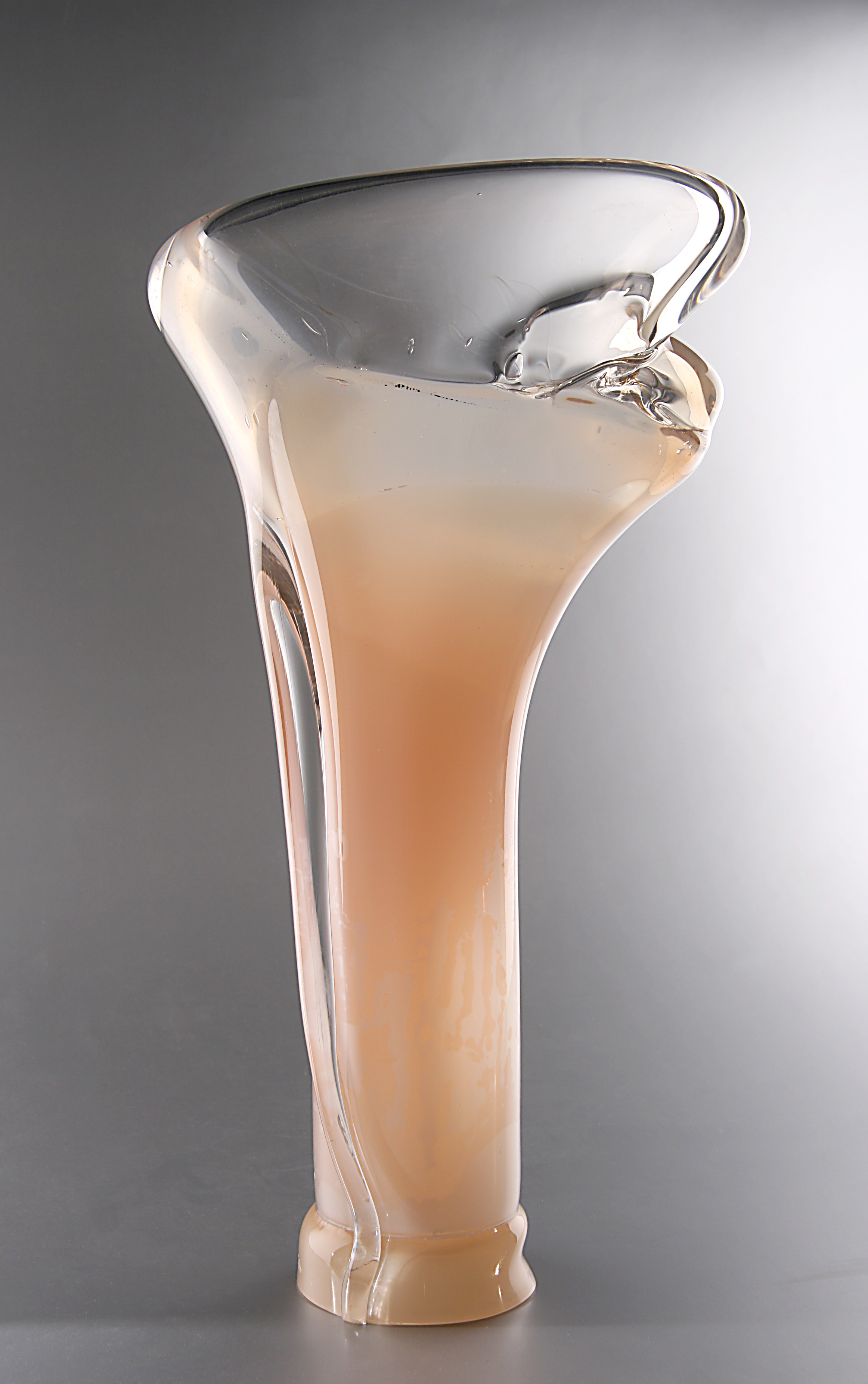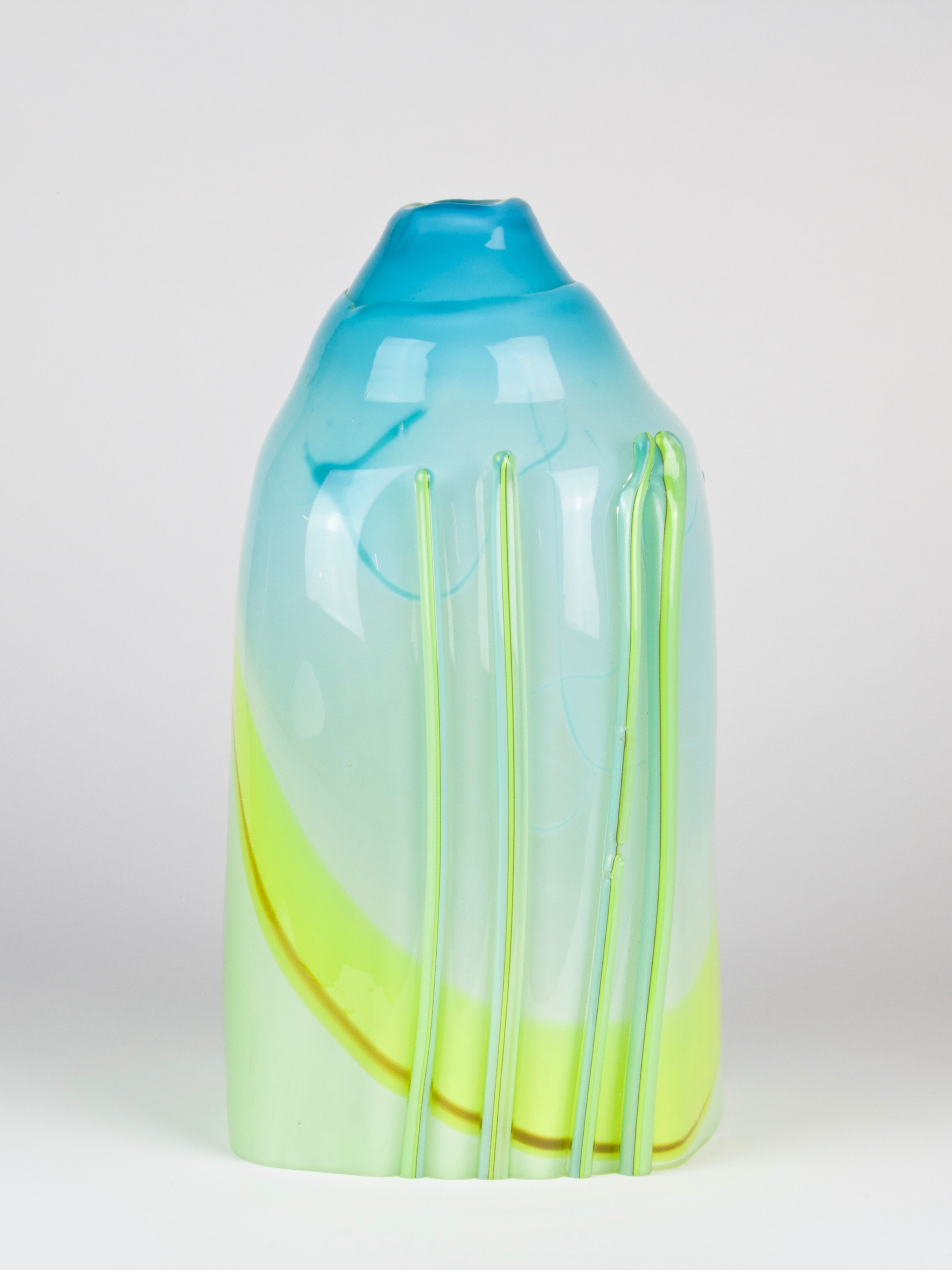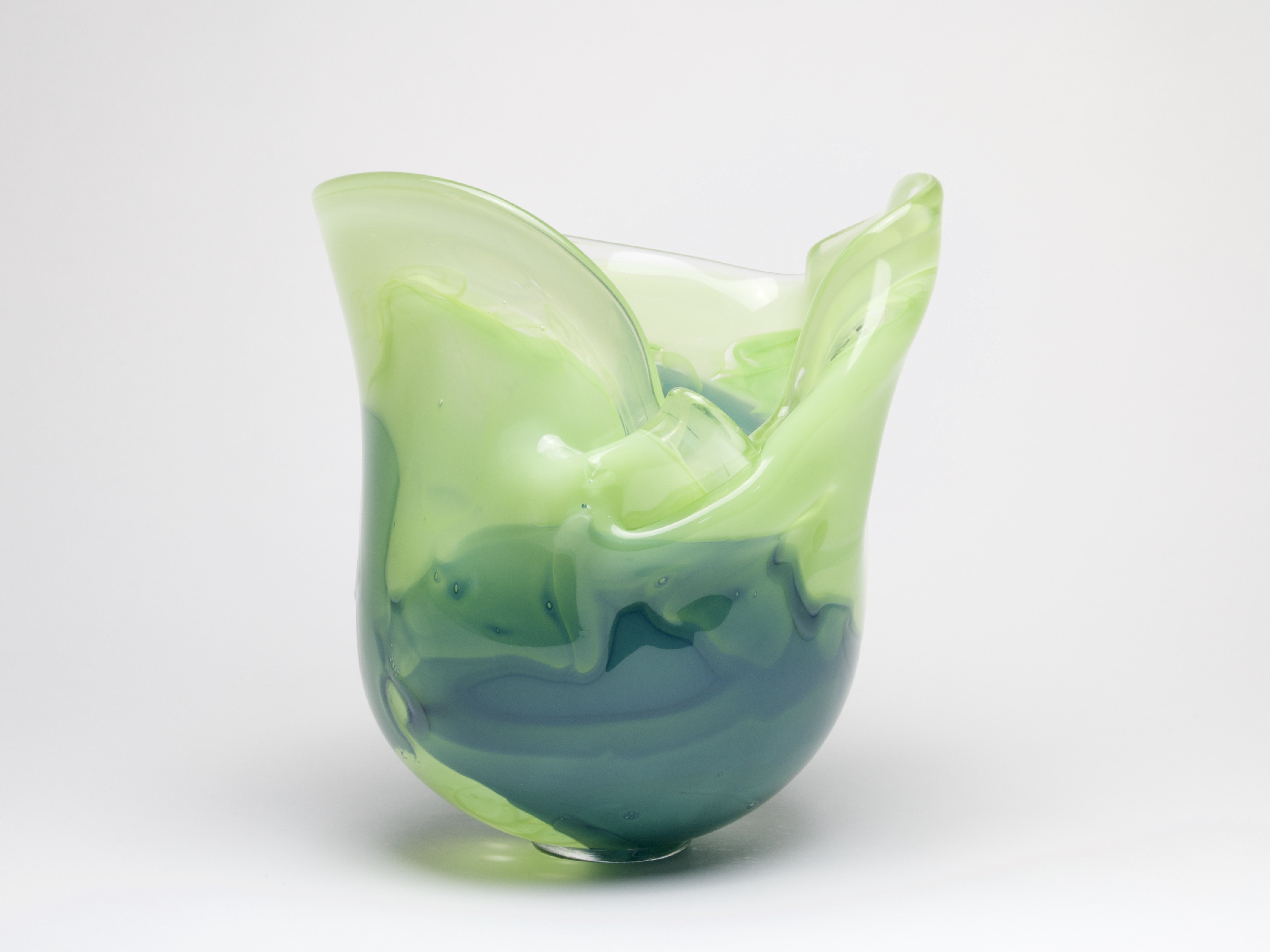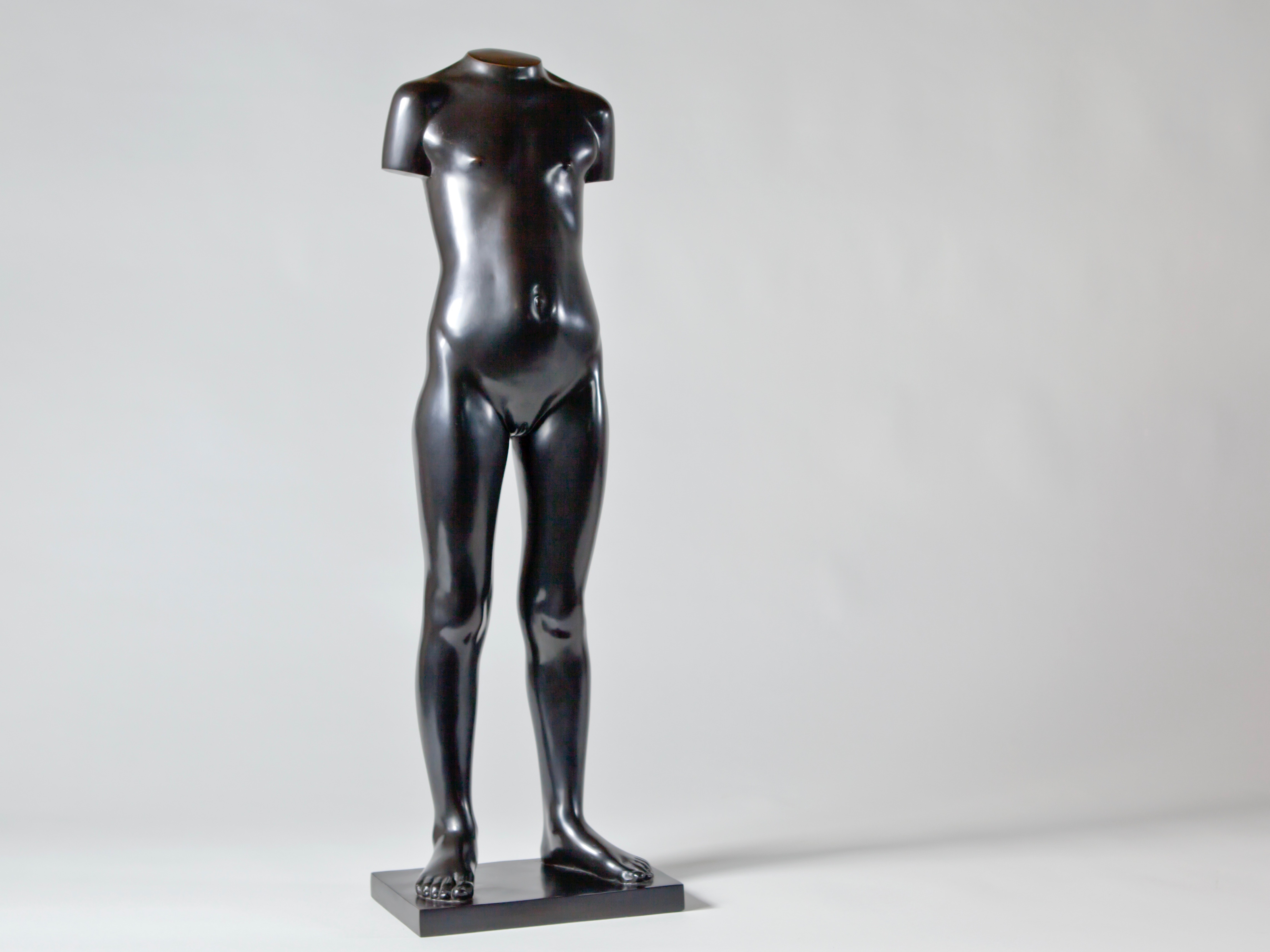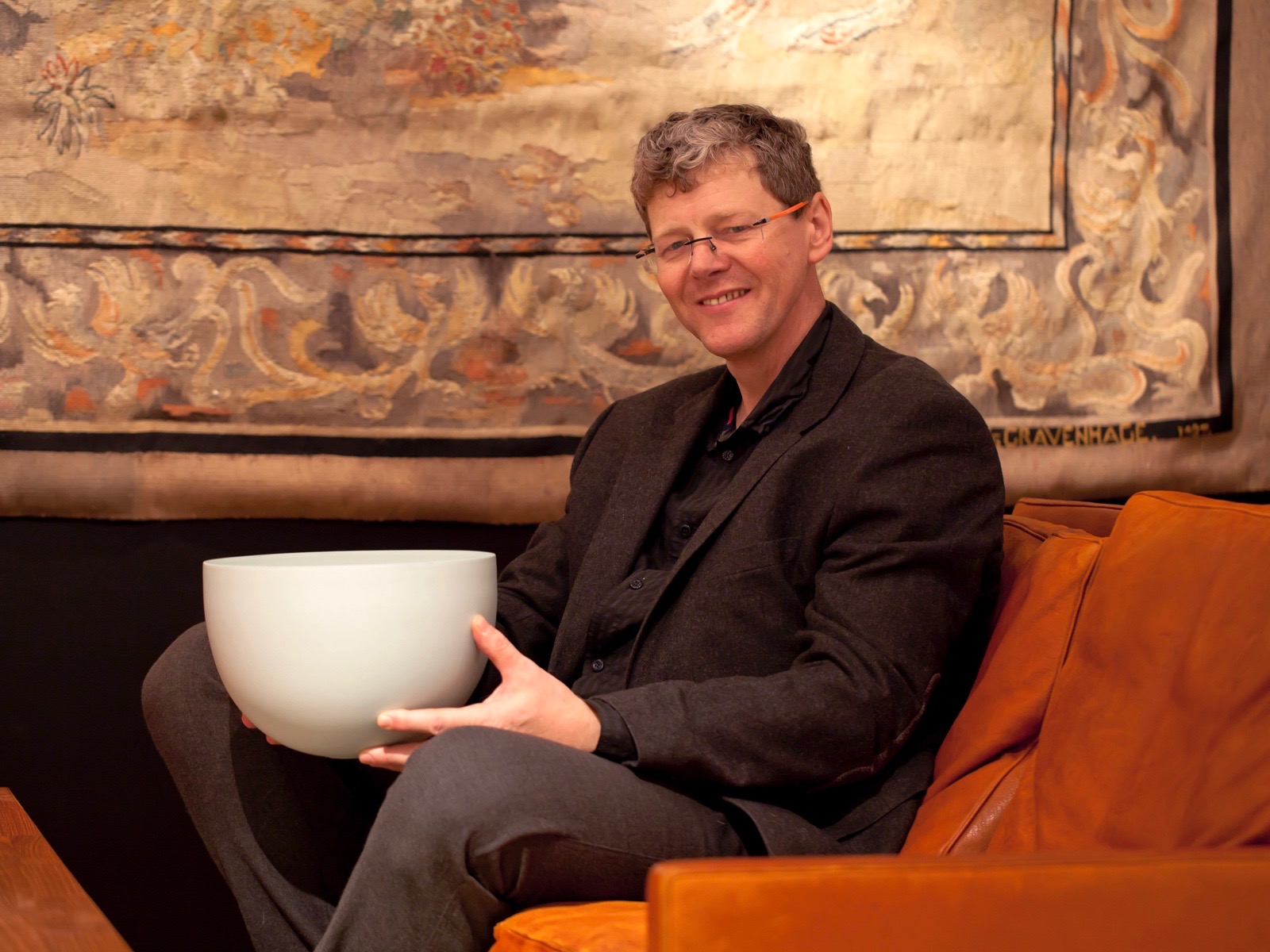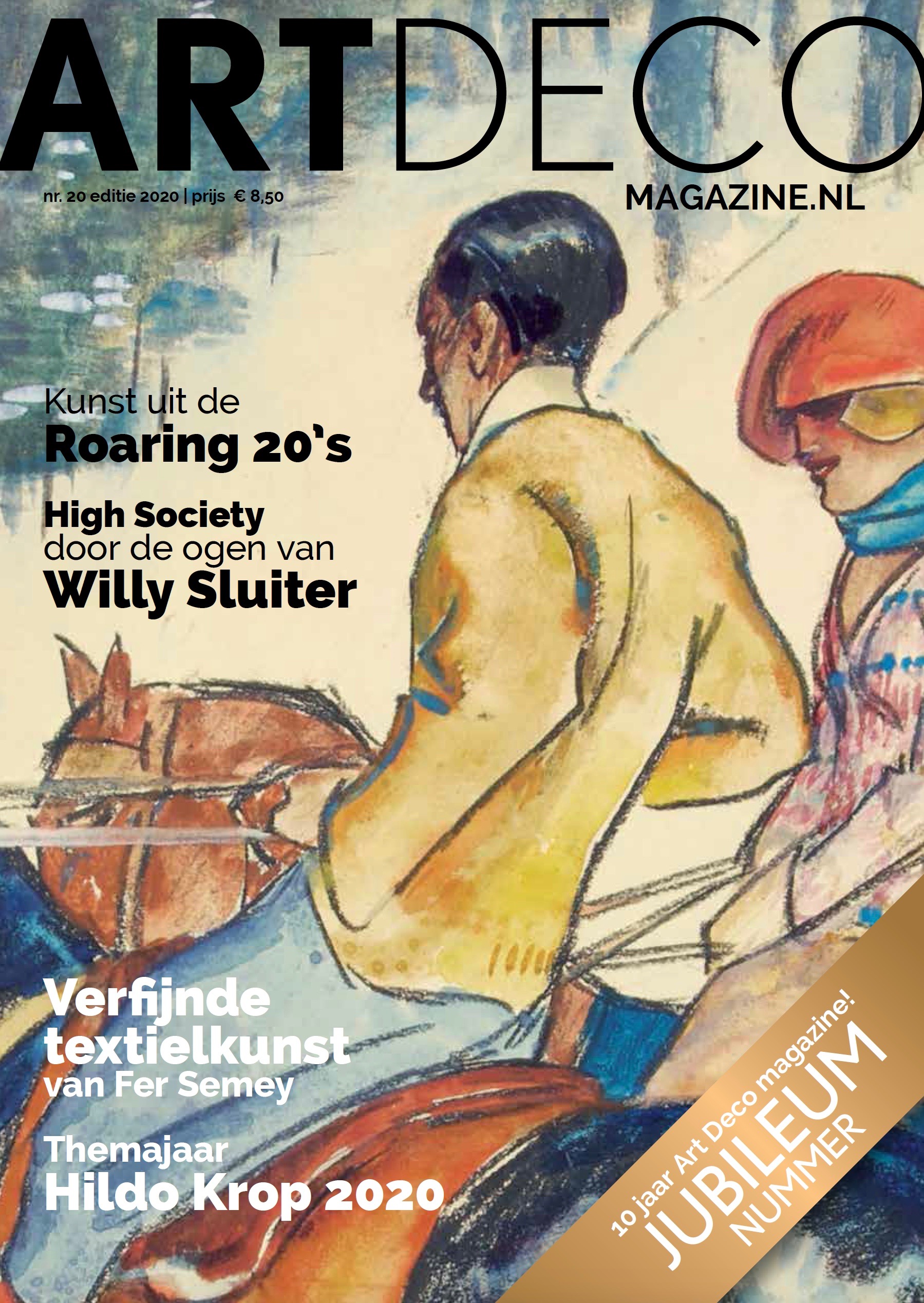Loose from the Glass Factory: Free glass in the Netherlands – part 2
After a career of almost sixty years, Andries Dirk Copier said goodbye to the Glasfabriek. For him, his retirement brought the freedom he needed to reinvent himself as an autonomous glass artist. With this he released himself from the demands of the glass industry, just like Sybren Valkema and Willem Heesen, the representatives of ‘free glass’ in the Netherlands.
The birth of ‘free glass’
In 1964 a decisive event for Dutch glass art took place. Valkema was delegated by the GKF (Gebonden Kunstenfederatie) to the inaugural meeting in New York of the World Crafts Council. Willem Heesen was also present as designer of Glass Factory Leerdam. Together they witnessed the demonstration by glass artist Harvey Littleton (US 1922 – 2013) of a gas-fired mobile glass oven that he co-developed. Littleton showed the possibility of working with glass outside of industry. Valkema immediately saw the potential of this device that offered the freedom to work with glass and to control the process from design to realized product. In the days that followed, Valkema and Heesen took the opportunity to blow glass themselves, under the guidance of Littleton.
Back in the Netherlands, Valkema and Heesen continued their ‘crash course’ glass blowing in the glass factory, assisted by the experienced glassblowers that taught them the tricks of the trade in the evening hours and on Saturdays. These experiences turned out to be invaluable to both designers. After his return from the United States, Valkema was busy building a small oven for his own use. At the end of 1965, he and Heesen succeeded in blowing the first glass bubble in Amsterdam. All the necessary equipment was gifted to them by the factory in Leerdam, since the mechanical production of bottles and other packaging glass had largely made manual work redundant. A year later, the completed oven in Amsterdam was ‘inaugurated’ by Littleton, making the first studio glass oven in Europe a reality.
Recognition of glass as an autonomous art form
With the help of his loyalists, Valkema set up a glass education so that in 1969, in the glass workshop of the new building of the Rietveld Academie, the Glass Seminar could start. After giving guest lectures at several American art academies, Valkema regularly received visits by fellow studio glass pioneers such as Littleton, Martin Lipofsky, Erwin Eisch and Sam Herman in Amsterdam. The seminar of the Rietveld Academie quickly became an international phenomenon that attracted students from all over the world. When Valkema said goodbye to the Academie ten years later, in 1979, there was a big celebration. His successors were his pupils Mieke Groot and Richard Meitner, who have since become big names in the glass world. For the 63-year-old Valkema, an even more intense life began with lectures, honorary awards and many trips to international glass centers to work with renowned glass artists. He also continued experimenting a lot at home in Blaricum, where he had built his own oven.
In 1985 he made his last Leerdam one-offs, alongside a series of works from his own oven. He also worked together with Heesen in studio De Oude Horn. In 1994 Valkema received the highest award of the American Glass Art Society: the Lifetime Achievement Award for his important contribution to the development of international glass art. Valkema had freed glass art from industry and had made it part of the curriculum of a renowned art academy. He thereby elevated glass art from ‘applied arts’ to autonomous, or free, art. Without the requirement for a function, the glass artist was free to make sculptural forms, instead of vases and bowls. This is clearly reflected in the works of Valkema and Heesen, which often consist of masks and objects.
Floris Meydam: ‘Second youth’ as glass artist
While Valkema and Heesen played a prominent role in the development of ‘free glass’, the Dutch version of the international Studio Glass Movement, Meydam primarily presented himself as the new type of versatile industrial designer for which Copier had laid the foundation. Unlike Valkema and Heesen, Meydam never blew his own glass, but after retiring from the glass factory, he did follow in the footsteps of Copier by starting a ‘second youth’ as a glass artist later in life. Thanks to the pioneering work of Littleton, Valkema and Heesen, new glass studios had sprung up like mushrooms all over Europe, allowing Meydam to experiment with talented young glass blowers in Switzerland, Austria, England and Italy.
Also read the blog Copier and the younger generation: Free glass in the Netherlands - part 1.
Photos: Erik Rijper, Dieter Enke, Noortje Remmerswaal
© Kunstconsult – 20th century art | objects
Reproduction and distribution of this text is only allowed with correct reference.
